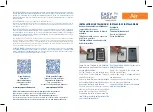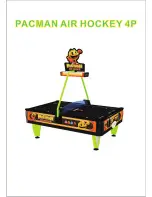
3
u
If you can adjust the chair’s backrest tension, make sure it is firm
enough to support your back while working. It should only tilt
back under force.
Step 5: Legs
Your lower legs should be at right angles to your thighs. Your upper
legs should be positioned so the knees are slightly above the hip joint.
Your feet should rest flat on the floor.
u
If your lower legs are not at right angles to your thighs, adjust the
chair to be higher.
u
If your feet do not rest flat on the floor, adjust the chair to be
higher. You may need to use a footrest to support your feet and
maintain the correct position relative to the keyboard.
u
If your thighs are compressed on the seat pan, the chair is too
high. Some chairs offer a seat pan tilt adjustment for a greater
range of lift.
Step 6: Environment
Do not work in a cold room. The American Society of Heating,
Refrigeration, and Air Conditioning Engineers (ASHRAE)
recommends the following office climate for the average clothed
individual:
u
Temperature between 73.0 and 79.0 degrees Fahrenheit (22.7 and
26.1 degrees Celsius) during the summer.
u
Temperature between 68.0 and 74.5 degrees Fahrenheit (20.0 and
23.6 degrees Celsius) during the winter.
u
Relative humidity between 30 and 60 percent all year.
Adjust the room lighting and the position of the monitor screen to
minimize screen glare and reflections. Do not work in an over- or
under-illuminated room; an average illumination of 50 foot-candles is
usually sufficient. Below this level, you should provide task lighting
for documents. Older individuals may require higher average
illumination, up to 100 foot-candles.
Содержание Ergonomics
Страница 1: ...Ergonomics Guide For Intergraph Systems DHA011510 February 1997...
Страница 8: ...6...


























